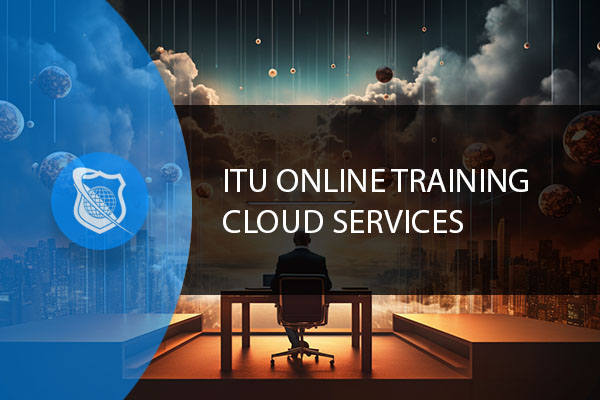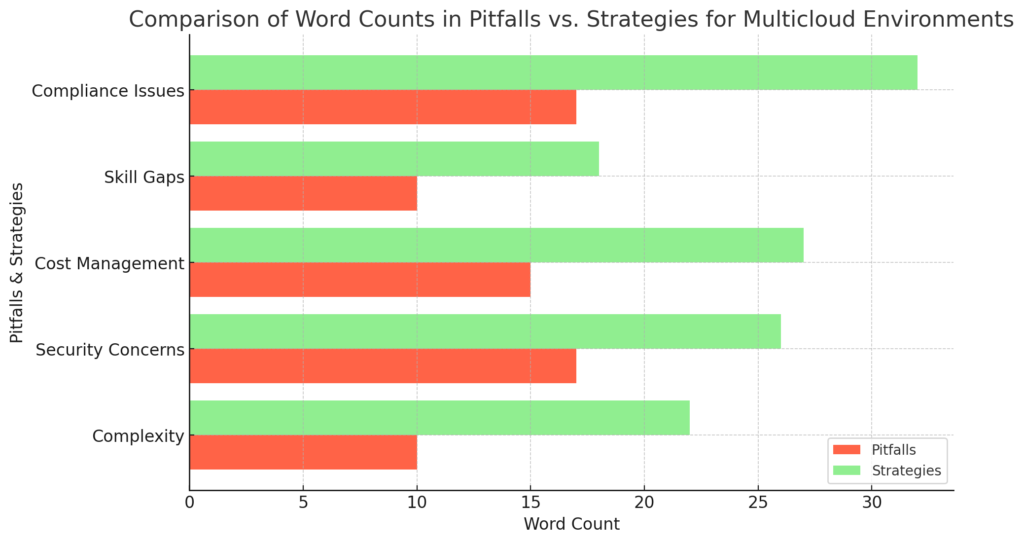What Is an Information Cascade?
Definition: Information Cascade An information cascade is a phenomenon where individuals make decisions based on the observations or actions of others rather than their own private information. This often leads

In today’s rapidly evolving digital landscape, the shift towards multicloud environments represents a significant leap forward for organizations seeking agility, resilience, and technological advancement. “Thriving in a Multicloud World: Strategies for Integration and Optimization” delves into the complexities and opportunities presented by adopting a multicloud strategy, offering a comprehensive guide for businesses aiming to navigate this intricate terrain successfully.
The allure of a multicloud approach lies in its promise of unparalleled flexibility, improved risk management, and the potential for cost optimization. By distributing resources across multiple cloud providers, organizations can leverage the unique strengths and services of each, tailoring their infrastructure to meet specific operational needs and strategic goals. However, the benefits of multicloud environments come with their own set of challenges, including increased complexity in management, security considerations, and the need for a skilled workforce adept in navigating diverse cloud ecosystems.
This introduction sets the stage for a deep dive into the strategies that can enable organizations to not only mitigate the challenges associated with multicloud environments but also to harness their full potential. It will explore the critical aspects of effective multicloud management, from developing a coherent cloud strategy and ensuring seamless integration across platforms to optimizing costs and maintaining robust security and compliance postures.
As we embark on this exploration, we will uncover the pivotal role of advanced tools and technologies in simplifying multicloud management, the importance of cultivating a culture of continuous learning and innovation, and the strategic value of partnerships in extending capabilities and enhancing cloud experiences.
“Thriving in a Multicloud World” aims to equip leaders, IT professionals, and organizations with the insights and tools necessary to navigate the multicloud landscape confidently. It is a call to action for businesses to embrace the complexity of multicloud environments as a catalyst for growth and innovation, paving the way for a future where agility, flexibility, and resilience are at the heart of digital transformation strategies.

At ITU, we offer an exclusive Cloud Computing training series designed to prepare you for certification and/or to help you gain knowlege of all Cloud based platforms including AWS, Azure and Gooogle Cloud.
Get access to this exclusive Cloud Computing Training today.
At its core, a multicloud strategy involves leveraging cloud services from more than one cloud provider. This approach differs from hybrid cloud strategies, which combine public and private clouds, often within a single provider’s ecosystem. The multicloud approach is about choice and flexibility, allowing businesses to select the best services from each provider to meet their specific needs.
Multicloud strategies can include public, private, and hybrid cloud deployments, and they offer several advantages:
However, managing a multicloud environment can be complex. It requires robust integration, consistent security policies, and effective management of different services and platforms. Despite these challenges, the benefits of flexibility, improved resilience, and potential cost savings make multicloud strategies increasingly popular among diverse organizations.
Why are so many organizations moving towards multicloud? Several factors contribute to this trend:

Here’s a chart comparing the word counts in the pitfalls versus strategies for multicloud environments. This visualization is a creative interpretation to show the balance between the challenges (pitfalls) and solutions (strategies) organizations might encounter in multicloud environments. Each category—ranging from complexity and security concerns to skill gaps and compliance issues—is countered with a corresponding strategy aimed at overcoming these challenges.
To harness the benefits of multicloud without falling into its traps, organizations need a coherent and comprehensive strategy. Here are essential strategies for effective multicloud management:

At ITU, we offer an exclusive Cloud Computing training series designed to prepare you for certification and/or to help you gain knowlege of all Cloud based platforms including AWS, Azure and Gooogle Cloud.
Get access to this exclusive Cloud Computing Training today.
Implementing a centralized governance model helps maintain control over cloud resources, ensuring compliance with organizational policies and standards. This model should include unified security policies, cost management practices, and performance monitoring.
Multicloud management platforms can simplify the complexity of operating in multiple cloud environments. These platforms offer tools for managing costs, security, and operations across different clouds from a single interface.
With the increased complexity of multicloud environments, a robust approach to security and compliance is crucial. This involves implementing consistent security policies, conducting regular audits, and ensuring data protection measures are in place across all cloud services.
Success in multicloud environments requires a team with expertise across various cloud platforms. Investing in training and certification for your IT staff can build the necessary skills to manage and optimize multicloud operations effectively.
Automating deployment, scaling, and management tasks across cloud environments can significantly reduce the complexity and risk of human error. Orchestration tools can help manage these workflows efficiently, ensuring consistent and reliable operations.

Your career in information technology last for years. Technology changes rapidly. An ITU Online IT Training subscription offers you flexible and affordable IT training. With our IT training at your fingertips, your career opportunities are never ending as you grow your skills.
Plus, start today and get 30 days for only $1.00 with no obligation. Cancel anytime.
As we conclude our exploration of thriving in a multicloud world, it’s clear that the journey toward effective integration and optimization within multicloud environments is both complex and rewarding. The strategic adoption and management of multicloud infrastructures demand a thoughtful approach, balancing the innovative capabilities of cloud computing with the practical challenges of operating in a diversified technological landscape.
The pitfalls associated with multicloud environments—ranging from operational complexity and security vulnerabilities to cost management challenges and the need for specialized skills—underscore the importance of adopting comprehensive strategies for integration and optimization. By addressing these challenges head-on with centralized management, enhanced security measures, cost optimization practices, skills development, and regulatory compliance management, organizations can unlock the full potential of multicloud environments.
Moreover, the journey toward multicloud excellence is not a solo endeavor. It necessitates collaboration across departments, partnerships with cloud providers, and engagement with a community of experts to share insights and best practices. The cultivation of a culture that values continuous learning, adaptability, and innovation is crucial for navigating the evolving cloud landscape successfully.
In embracing the strategies outlined in “Thriving in a Multicloud World,” organizations can achieve more than just technological advancement; they can foster resilience, agility, and a competitive edge in an increasingly digital world. The future of cloud computing is not confined to single-provider solutions but is expansively multicloud, offering a spectrum of opportunities for those prepared to navigate its complexities.
As we look to the horizon, the potential of multicloud environments is boundless. By leveraging the strengths of diverse cloud platforms, businesses can propel themselves toward unprecedented growth and innovation. The key to multicloud success lies in a balanced approach, embracing the myriad benefits while effectively managing the inherent challenges. In doing so, organizations can not only thrive in a multicloud world but also redefine the boundaries of what is possible in the digital age.
Understanding key terms related to multicloud environments is essential for professionals navigating this complex and dynamic field. As organizations increasingly adopt multicloud strategies, grasping the terminology becomes critical for effective communication, decision-making, and implementation. This knowledge not only aids in understanding the intricacies of multicloud systems but also facilitates better management and optimization of these environments.
| Term | Definition |
|---|---|
| Multicloud Environment | The use of cloud services from multiple cloud providers, often involving a mix of public, private, and hybrid clouds. |
| Hybrid Cloud | A cloud computing environment that combines on-premises private cloud resources with third-party public cloud resources. |
| Cloud Provider | A company that offers cloud computing services, such as AWS, Azure, or Google Cloud Platform. |
| Vendor Lock-in | The reliance on a single cloud provider’s technologies and services, making it difficult to switch to another provider. |
| Cloud Computing | The delivery of different services through the Internet, including data storage, servers, databases, networking, and software. |
| Public Cloud | Cloud resources owned and operated by a third-party cloud service provider delivered over the internet. |
| Private Cloud | Cloud resources used exclusively by one business or organization, offering greater control and security. |
| Cloud Migration | The process of moving data, applications, or other business elements to a cloud computing environment. |
| Cloud Security | Measures and technologies that protect cloud computing environments against external and internal cybersecurity threats. |
| Data Sovereignty | The concept that digital data is subject to the laws of the country in which it is located or stored. |
| Compliance | Adherence to laws, regulations, guidelines, and specifications relevant to business operations. |
| Cost Optimization | The process of reducing costs while maximizing the effectiveness of cloud resources. |
| Scalability | The ability of a cloud computing environment to handle increasing workloads by adding resources. |
| Automation | The use of technology to perform tasks with reduced human intervention in cloud environments. |
| Orchestration | The automated arrangement, coordination, and management of complex computer systems, middleware, and services. |
| Centralized Governance | The establishment of a single point of control over multiple cloud environments for better management and compliance. |
| Cloud Expertise | The specialized knowledge required to design, implement, and manage cloud environments. |
| Security Policies | Set of rules and practices that regulate how an organization protects its cloud-based information and resources. |
| Cloud Native Tools | Tools and applications designed specifically for use in cloud environments, often for automation and management. |
| Risk Mitigation | Strategies and methods used to reduce adverse effects on cloud environments, such as downtime or data loss. |
This list offers a fundamental understanding of the terms crucial in the realm of multicloud environments, enhancing the ability to effectively manage and optimize these technologies.
Multicloud management refers to the practice of overseeing and controlling the operations, security, costs, and deployment of applications and data across multiple cloud environments. It’s crucial because it allows organizations to optimize their cloud resources for efficiency, agility, and innovation, leveraging the strengths of various cloud providers to meet specific business needs while minimizing risks related to vendor lock-in, cost overruns, and security vulnerabilities.
To navigate the complexity of multicloud environments, organizations should adopt a strategic approach that includes centralized management platforms, consistent security policies across clouds, and comprehensive visibility into all cloud resources. Investing in automation and orchestration tools can also streamline operations, reduce manual errors, and improve efficiency.
Cost optimization in multicloud environments can be achieved by adopting a combination of strategies such as identifying and eliminating unused or underutilized resources, leveraging committed use discounts or reserved instances where appropriate, and employing cost management tools to monitor and allocate cloud spending effectively. Additionally, choosing the right mix of cloud services based on price-performance analysis for each workload can lead to significant savings.
Ensuring security and compliance in a multicloud strategy involves implementing uniform security policies across all cloud platforms, conducting regular audits, and utilizing cloud-native security tools designed for multicloud environments. Organizations should also focus on data encryption, access controls, and compliance monitoring to meet regulatory requirements and protect sensitive information across different clouds.
Skill development is pivotal for successful multicloud management as it equips teams with the knowledge and expertise required to navigate the complexities of different cloud platforms. Continuous learning and training in cloud technologies, security practices, and cost management are essential for IT professionals to design, implement, and manage multicloud environments effectively. Encouraging certifications and providing access to learning resources can foster a culture of innovation and adaptability within the organization.
Lorem ipsum dolor sit amet, consectetur adipiscing elit. Ut elit tellus, luctus nec ullamcorper mattis, pulvinar dapibus leo.
$49.99 Original price was: $49.99.$16.99Current price is: $16.99. / month with a 10-day free trial
Definition: Information Cascade An information cascade is a phenomenon where individuals make decisions based on the observations or actions of others rather than their own private information. This often leads
Definition: Wi-Fi Hotspot A Wi-Fi hotspot is a physical location where people can access the internet using Wi-Fi technology via a wireless local area network (WLAN) with a router connected
Definition: Universal Asynchronous Receiver/Transmitter (UART) A Universal Asynchronous Receiver/Transmitter (UART) is a hardware communication protocol that facilitates serial communication between devices by transmitting and receiving data byte by byte asynchronously.
Definition: No-Code Development Platform A no-code development platform is a software environment that allows users to create applications through graphical user interfaces and configuration rather than traditional hand-coded programming. These
Definition: Data Retention Policy A Data Retention Policy is a set of guidelines and practices that dictate how long data should be kept and maintained before being deleted or archived.
Definition: Grease Monkey (User Scripting) Grease Monkey, commonly referred to as Greasemonkey, is a user scripting tool that allows users to customize the way web pages appear and function by
Definition: Python Django REST Framework The Python Django REST Framework (DRF) is a powerful and flexible toolkit for building Web APIs in the Python programming language. It is built on
Definition: Virtual Appliance A virtual appliance is a pre-configured virtual machine image, typically built to run on a hypervisor or within a virtualized environment. These appliances contain an operating system
Definition: Open/Close Principle The Open/Close Principle is one of the five SOLID principles of object-oriented design that dictates that software entities (such as classes, modules, and functions) should be open
Definition: Escalation Policy An escalation policy is a predefined set of procedures and steps that an organization follows to address and resolve issues, incidents, or problems that exceed the scope
Definition: Virtual Machine Backup Virtual Machine Backup refers to the process of creating and storing copies of virtual machines (VMs) to ensure data availability, integrity, and recoverability in case of
Definition: Firewall Inspection Firewall inspection refers to the process by which a firewall analyzes network traffic to enforce security policies. This involves scrutinizing packets of data to detect and prevent
ENDING THIS WEEKEND: Train for LIFE at our lowest price. Buy once and never have to pay for IT Training Again.